AWS Certified Developer - Associate
Databases
DynamoDB Pricing Throughput
In this guide, we'll dive into DynamoDB’s pricing structure and throughput management by exploring its two capacity modes: provisioned and on-demand. Understanding these modes is essential for optimizing performance and cost.
Capacity Modes Overview
DynamoDB provides two capacity modes, each tailored to different workload patterns:
Provisioned Mode: Best suited for predictable workloads. In this mode, you reserve a predefined number of read (RCUs) and write (WCUs) capacity units. You are billed based on the provisioned throughput, regardless of the actual usage.
On-Demand Mode: Ideal for unpredictable or spiky workloads. Here, throughput capacity scales automatically based on the current demand and you only pay for the actual requests made. Note that on-demand costs are higher per request compared to the provisioned option.
Provisioned Throughput Details
When using provisioned mode, it is necessary to configure your table with the required read and write capacity units:
- Read Capacity Units (RCUs): Measure the throughput for read operations.
- Write Capacity Units (WCUs): Measure the throughput for write operations.
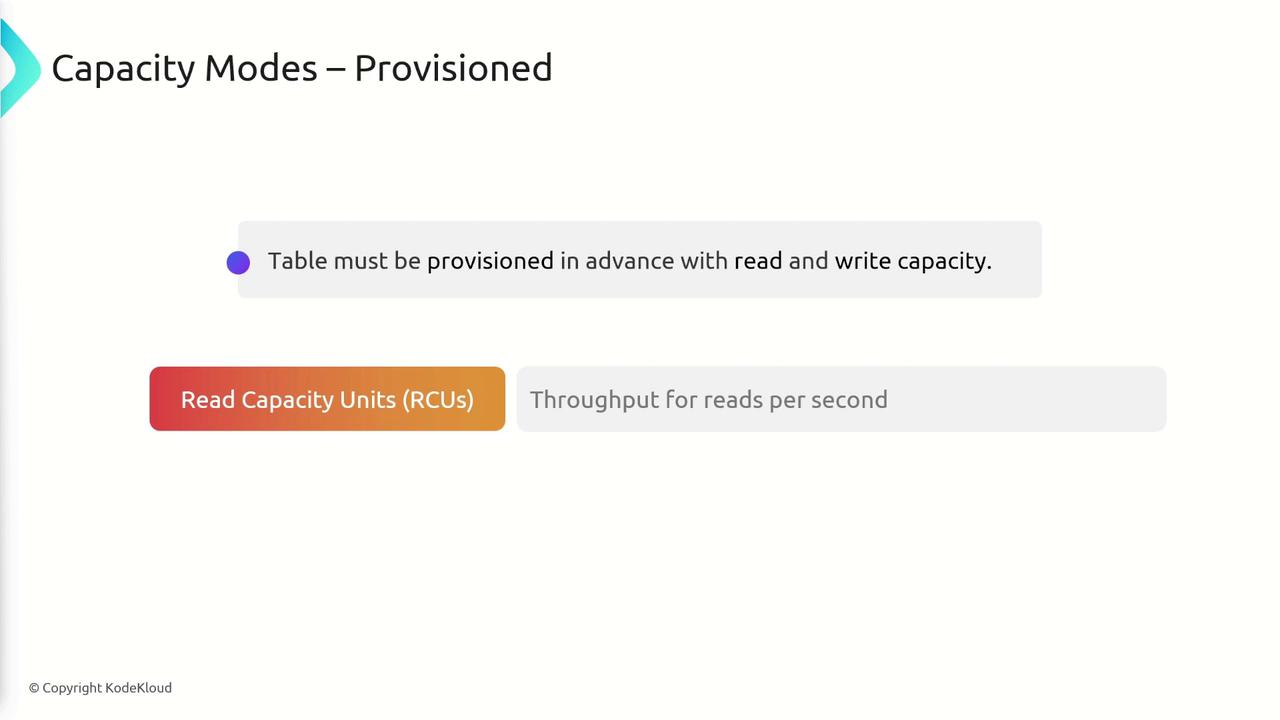
Provisioned mode also allows for a temporary burst in capacity. However, if your workload exceeds the provisioned limits, DynamoDB will raise a "ProvisionedThroughputExceededException."
Understanding RCUs and WCUs
Accurately calculating and provisioning capacity is crucial for maintaining optimal performance. Below, we break down the two core metrics.
Write Capacity Units (WCUs)
- Definition: One WCU corresponds to one write per second for items up to 1 kilobyte in size.
- Calculation: Determine the required WCUs by multiplying the number of writes per second by the item size in kilobytes. If the resulting value is fractional, round up to the next whole number.
For instance:
- Writing an item of 1 KB per second requires 1 WCU.
- Writing an item of 3 KB per second requires 3 WCUs.
- For fractional results (e.g., 5.5), round up to 6 WCUs.
Consider this example calculation:

# Example calculations for WCUs
# Example #1: 20 items per second with each item of 4.5 KB (round up to 5 KB)
# Example #2: 5 items per second with each item of 3 KB
# Example #3: 120 items per minute with each item of 3 KB (convert to per second)
# Calculation: (120 / 60) x 3KB / 1KB = 6 WCUs
Read Capacity Units (RCUs)
DynamoDB distinguishes between two types of read operations, each with its own capacity considerations:
- Strongly Consistent Reads: Every read request for items up to 4 KB consumes one RCU.
- Eventually Consistent Reads: Two read operations per second can be served using one RCU for items up to 4 KB.
Consistency Explained
When data is written to DynamoDB, it is replicated across multiple servers. Fetching data from a replica other than the one that received the write can cause temporary inconsistencies. This scenario results in an eventually consistent read. In contrast, strongly consistent reads always reflect the latest data but consume twice the RCUs.
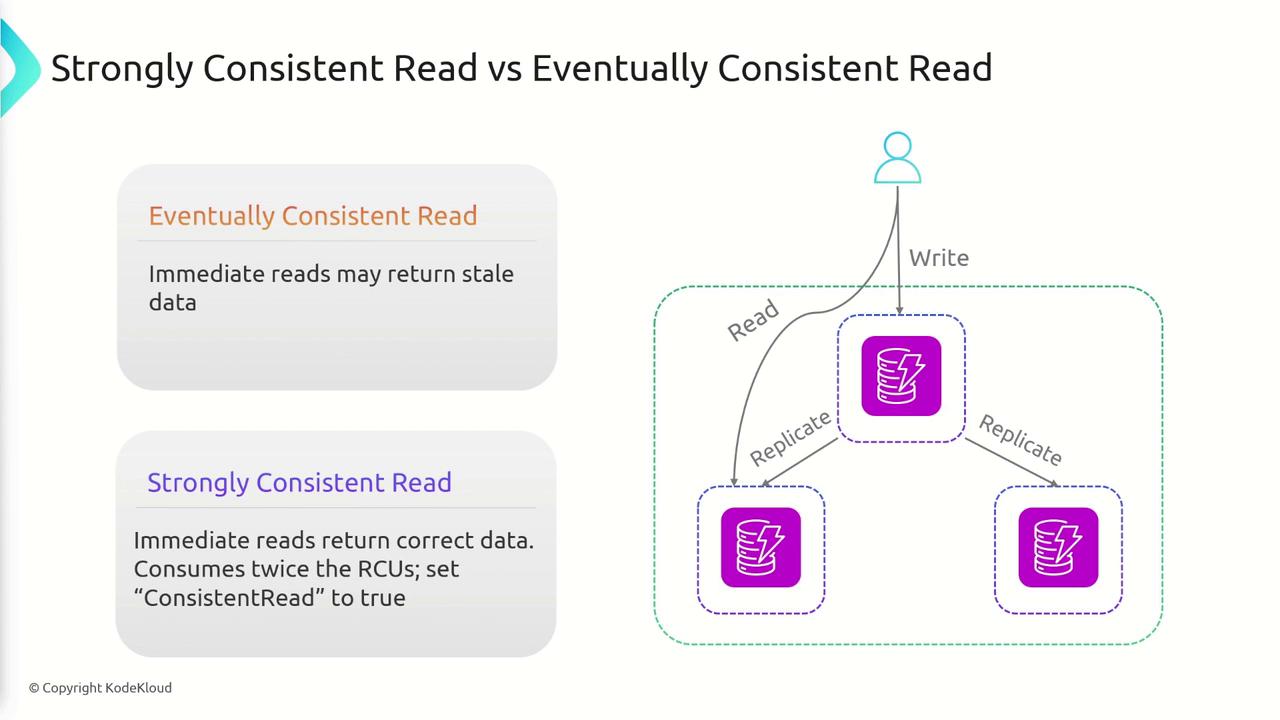
Read Capacity Calculations
Below are examples of how to calculate RCUs for different read scenarios:
Eventually Consistent Reads:
If you perform 20 eventually consistent reads per second for items of 8 KB each, then:RCUs required = 20 (reads/s) × (8 KB / 4 KB) / 2 = 20 RCUs.
Strongly Consistent Reads:
For 10 strongly consistent reads per second on items of 12 KB each:RCUs required = 10 (reads/s) × ceil(12 KB / 4 KB) = 10 × 3 = 30 RCUs.
Alternate Strongly Consistent Read Example:
For 30 reads per second with each item of 9 KB (round up to 12 KB):RCUs required = 30 (reads/s) × (12 KB / 4 KB) = 90 RCUs.
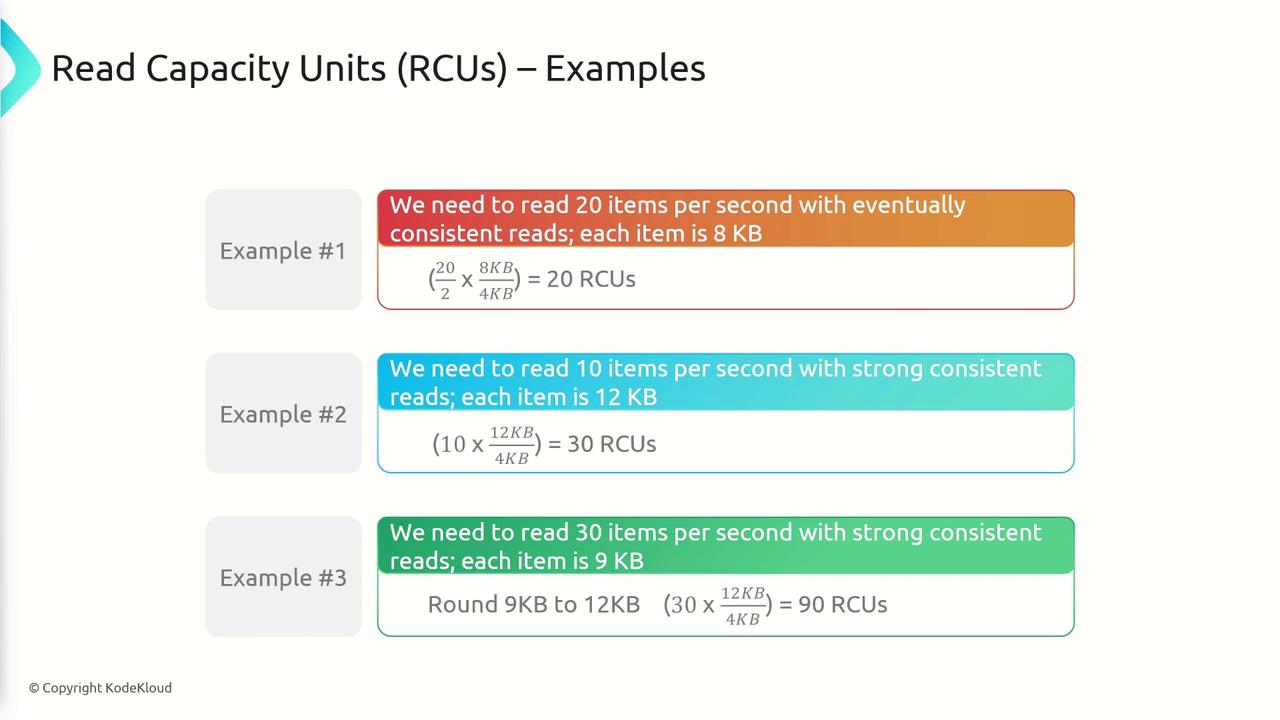
Note
Exceeding the provisioned throughput for RCUs or WCUs will trigger a "ProvisionedThroughputExceededException." This often happens when there is a high frequency of operations on a single partition key, inadequate partition key distribution, or unusually large item sizes.
Mitigating Provisioned Throughput Exceeded Exceptions
To prevent or mitigate these errors, consider the following strategies:
- Use a well-distributed partition key to balance the workload.
- Implement exponential backoff to manage retries when requests are throttled.
- Leverage DynamoDB Accelerator (DAX) to cache read-intensive operations, reducing the likelihood of read throttling.
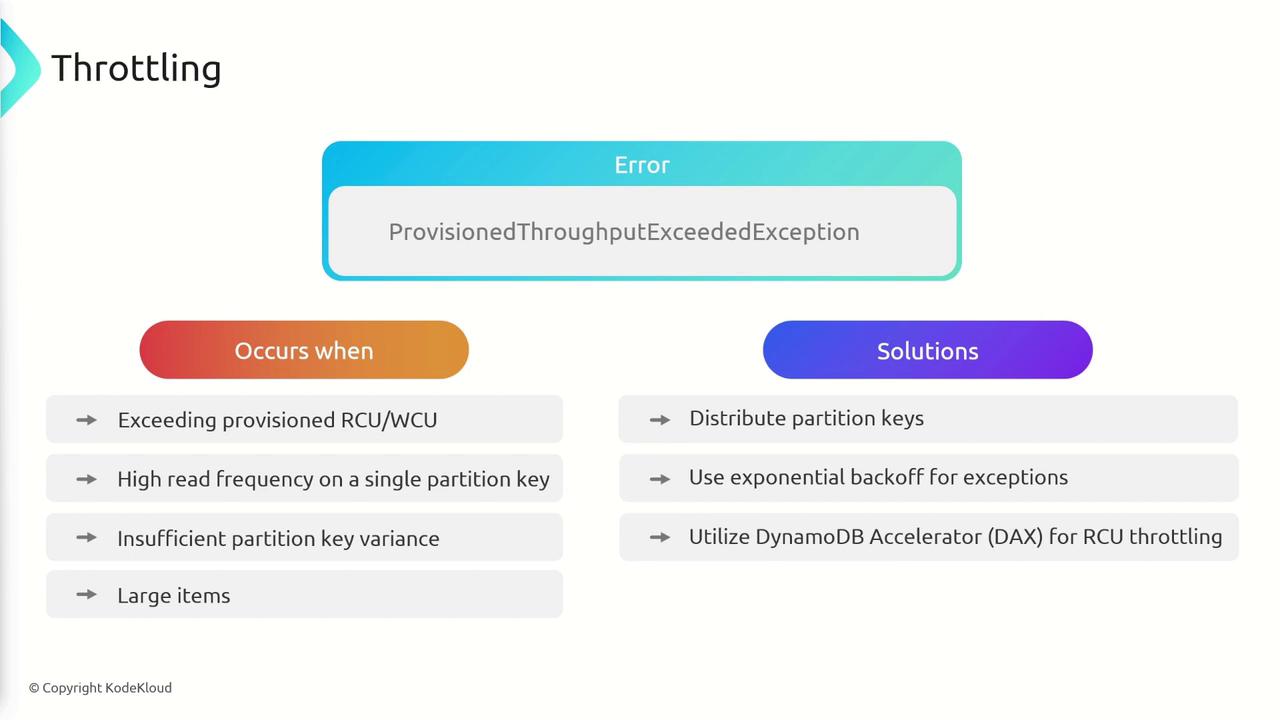
Summary
DynamoDB’s capacity modes allow you to tailor throughput performance based on your application needs:
- Provisioned Mode: Involves pre-configuring the RCUs and WCUs, offers temporary burst capacity, and requires careful capacity planning.
- On-Demand Mode: Automatically adjusts capacity to meet demand, with billing based on usage.
For optimal performance and cost-efficiency when using provisioned mode:
- Appropriately configure throughput based on anticipated workload.
- Ensure a diverse partition key structure to avoid hotspots.
- Consider implementing exponential backoff for retries.
- Explore DAX for caching to help manage high read loads.
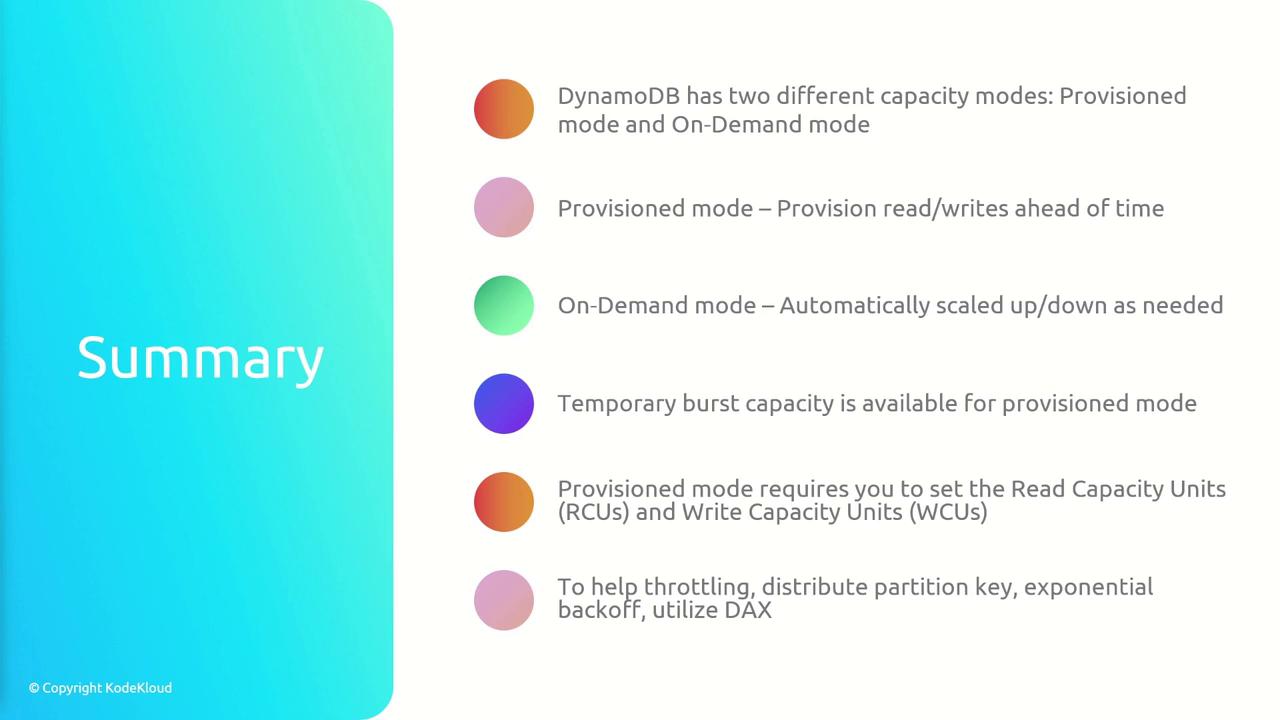
For more detailed information, refer to the official DynamoDB documentation.
Watch Video
Watch video content